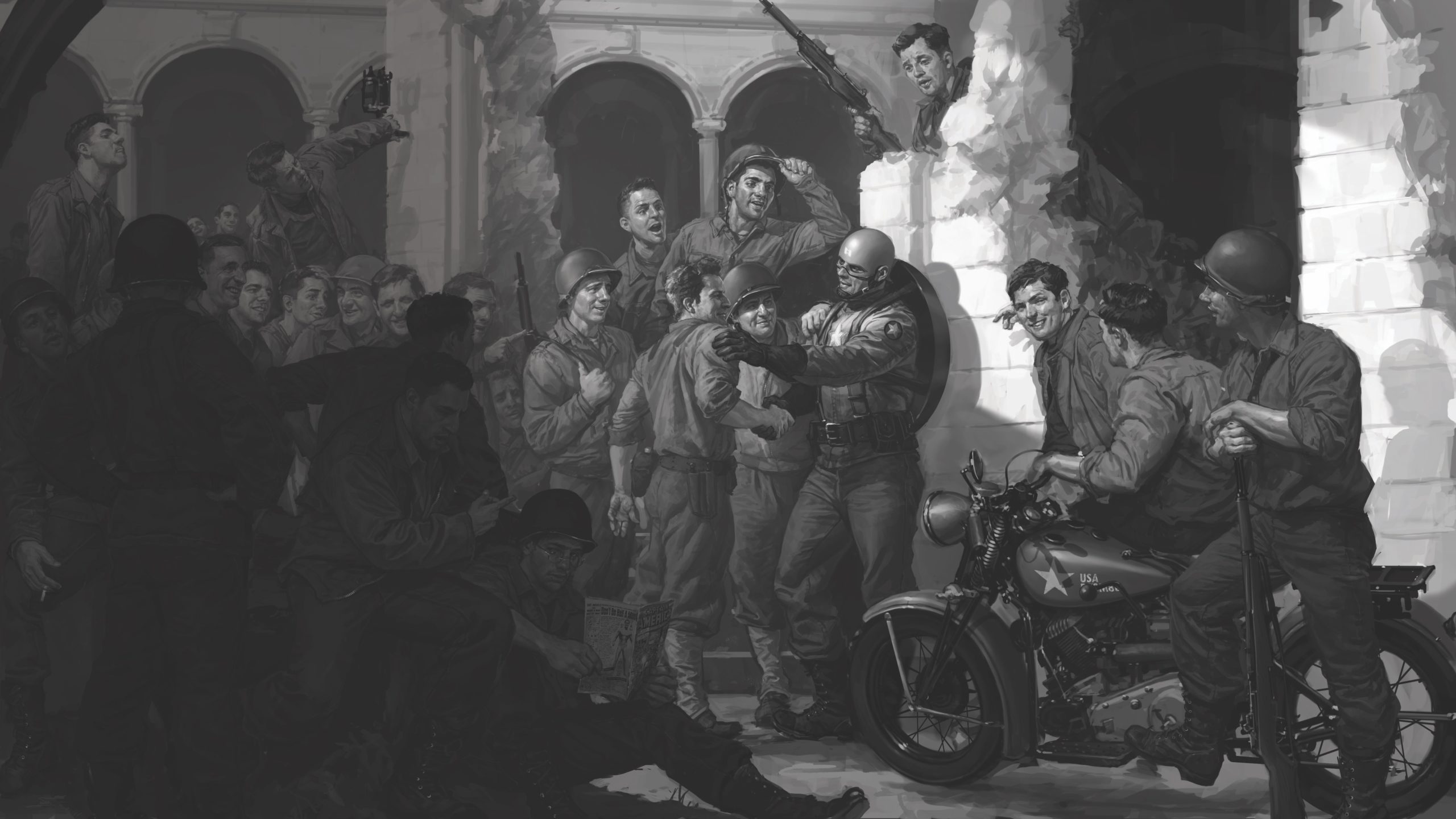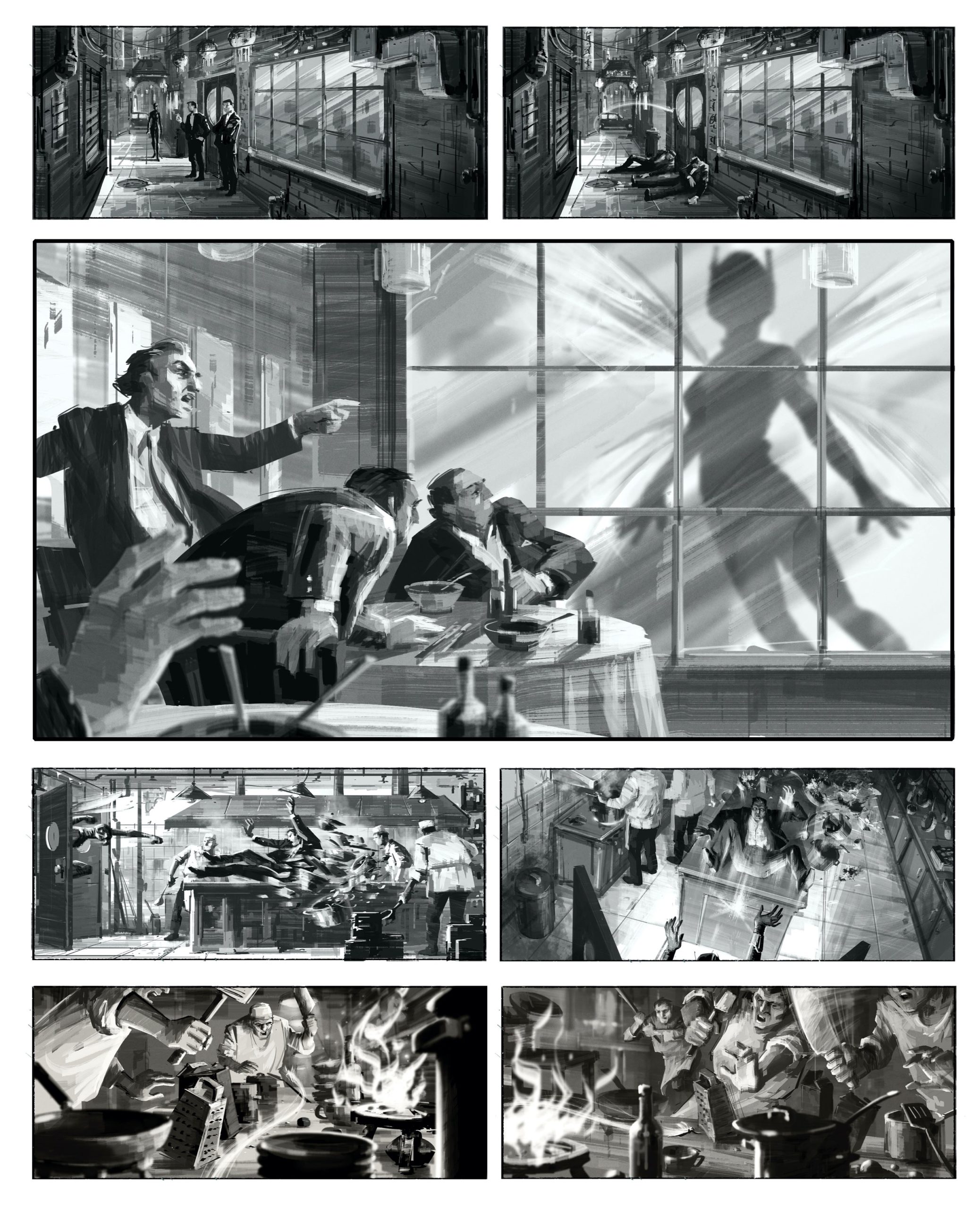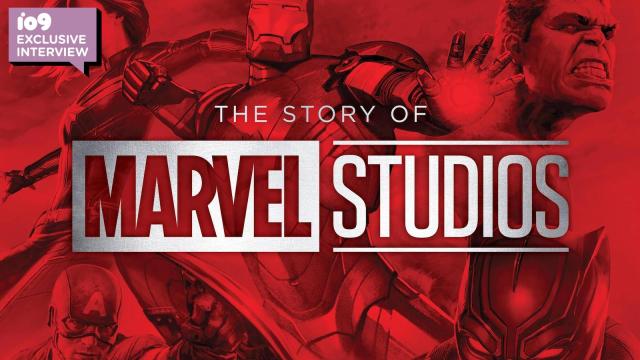Fans are paying outsized amounts of attention the moment any tidbit of Marvel news breaks, and because the studio puts out so much information about what’s in the pipeline, it can be easy to get the impression you’re getting the full picture. But Tara Bennett and Paul Terry, the co-authors of Abrams’ upcoming The Story of Marvel Studios: The Making of the Marvel Cinematic Universe, know that despite the deluge of behind-the-scenes footage and interviews that Marvel’s shared in the past, there’s so much more to the story of how the Marvel Cinematic Universe came to be.
When Marvel Studios executives joke about their movies and series being small, modest indies, it’s because we all understand how Marvel projects have become reality-warping events that dominate news cycles and people’s imaginations, no matter how much time we spend accurately pointing out how derivative they sometimes are. In their new book, Bennet and Terry talk to the creators who helped realise the cinematic universe that’s fundamentally reshaped how Hollywood approaches big-budget features, and explore what all it took to realise Marvel’s grand vision. When Gizmodo recently got a chance to speak with the pair via email, they opened up a bit about what it was like to chronicle the MCU’s origin story in real-ish time and what kinds of new details fans should expect to find as they dive in to read. Unfortunately, the authors decided to answer our questions together instead of separately, therefore each answer is attributed to both authors.
Charles Pulliam-Moore, io9: What exactly was your access to interviewees like for the production of this book? How much access was there, and how free were you to ask difficult questions of them about the projects they’d been involved in?
Tara Bennett and Paul Terry: It was unprecedented. During the making of the book, we had two different offices at Marvel Studios. We often conducted interviews in our space, or in one of the conference rooms at the studio that are used for their meetings and creative conversations (including developing and writing the movies themselves). Being placed inside the heart of the studio, we were able to witness, up close, what the dynamic and the culture is there. That meant that we got to see, on a regular basis, the way that producers communicate — about the projects, but also just as people.
As fans will see in the book, over the course of countless conversations with Kevin Feige and the rest of the producers there, plus the cast and crew of The Infinity Saga, they welcomed us to ask the kinds of question that MCU fans reading this interview are wondering whether we did ask. Their openness, honesty, and involvement with crafting this book over the course of four years — and their hands-on work in helping coordinate interviews — was genuinely something on a level that we’ve never experienced before on an officially licensed book. And, when we were on set, the unit publicist was incredible at coordinating interviews in between shooting.
io9: So much of this book is filled with background details to different Marvel projects that fans have likely heard certain elements about over the years. Over the course of writing this book, what did you come to realise about how much the public knows, or thinks it knows, about the goings-on of these projects versus what the people working on these projects really work hard to keep to themselves?
Bennett and Terry: We would not characterise it as something that they “really work hard to keep to themselves.” It’s just that public-facing press conversations are, by their very nature, focused on being about a movie’s upcoming release. The simple truth of the matter is — and something that we discovered on the first day of doing interviews — was that the studio team has never actually been asked to, in detail, tell the full story of how they came to be Marvel Studios. And, in turn, explain exactly how they made the Marvel Cinematic Universe.
With us being approved by the studio, and the project being given the personal support and approval of Kevin Feige, this meant that producers, cast, and crew were immediately disarmed. They had the comfort of knowing that, if Kevin wanted to tell the full story of the studio, then they had his blessing to do that too. And, as fans will see, everyone was very honest about that story. This book is far from just something that celebrates the successes. It actively shines a light on the struggles, the risk-taking, and the stressful times too. Fans will genuinely be surprised by the stories we were told. And by the timeline that fans think that they know, with regards to when the studio first had desires/conversations about bringing certain characters into the MCU.

io9: Reading this, you really get a sense of how personal an endeavour the creation of the MCU has been for Kevin Feige and the filmmakers, even though it’s such a collaborative effort. Beyond the fact that he’s been instrumental in the MCU’s creation, and so hands-on as a leadership figure within Marvel Studios, what aspects of the filmmakers as people and their different styles did you come to better understand while working on the book?
Bennett and Terry: Rather than list everyone and their differences, it’s actually easier to explain by inverting that notion. Although the studio’s producers, and the films’ directors, naturally all have different creative energies, ideas, and approaches to storytelling, it’s actually the shared collaborative spirit which quickly became apparent as the strongest connector between them. They all share an excitement about wanting to hear other people’s ideas.
They never want anyone to feel like they cannot speak up — even if that person feels, inside, like they might be the lone voice with a contrary reaction to a scene, a character, or a moment. Yes, there is an exacting, precision nature to their filmmaking. But it also always begs for new ideas. This may surprise some fans, because that detail-orientated approach doesn’t feel like it has any room for spontaneity. However, if there’s a new, better idea, they want to hear it. Consider it. And perhaps act on it. Even if it’s right down to the wire of something needing to be locked. That remains a core tenet. And we’re excited for fans to read the ample amount of stories that support it.
io9: I’m curious to hear what pieces of the Infinity War/Endgame production you were particularly excited to be able to dig into on the page.
Bennett and Terry: One of most exciting things about this project was the timing of when it began. We had our first meetings about the book in early 2017. So that meant, come the summer, we were already planning on travelling to Pinewood in Atlanta to observe, and do interviews for Infinity War, Endgame, and Ant-Man and the Wasp. And, in October, on our second Georgia trip, we had the mind-blowing experience of being at the location shoot for Tony Stark’s funeral. Then, the “class photo” of the MCU alumni. Followed by the 10th anniversary toast. Getting to cover all of those events was extraordinary, as they each marked a significant moment in Marvel Studios’ history, and in film history.
But, of course, being there for Tony Stark’s funeral scene was next level. Beyond the scene itself, it was also an incredible experience because of the emotion that you could see on everyone’s faces — the actors, many meeting for the first time, the producers, and all the crewmembers — and you could feel it in the air too. It was an extraordinary moment. And a special movie secret to be entrusted to keep. This project has gifted us countless moments like that, where we get to be present at a moment, or conversation, that is imbued with deeply personal emotions. And things that also recall other, related sense memories that the studio and cast and crew were kind enough to share with us. It’s those human moments that led to many of the book’s most exciting remembrances.

io9: As fans pore over this book looking to broaden their understanding of the work that went into the MCU’s production, what do you think they should keep in mind?
Bennett and Terry: Simply to keep in mind that this all began with a small, scrappy group of creative people that had an idea. And, when they’re reading through each year/chapter of the studio’s output, watch how that development, and the collaborations, evolved. And see how that independent filmmaking spirit remains, to this day. Then, beyond the MCU, we hope that this book inspires the next generation of creative people to take their own big swings.
The Story of Marvel Studios: The Making of the Marvel Cinematic Universe hits stores in Australia on October 21.
